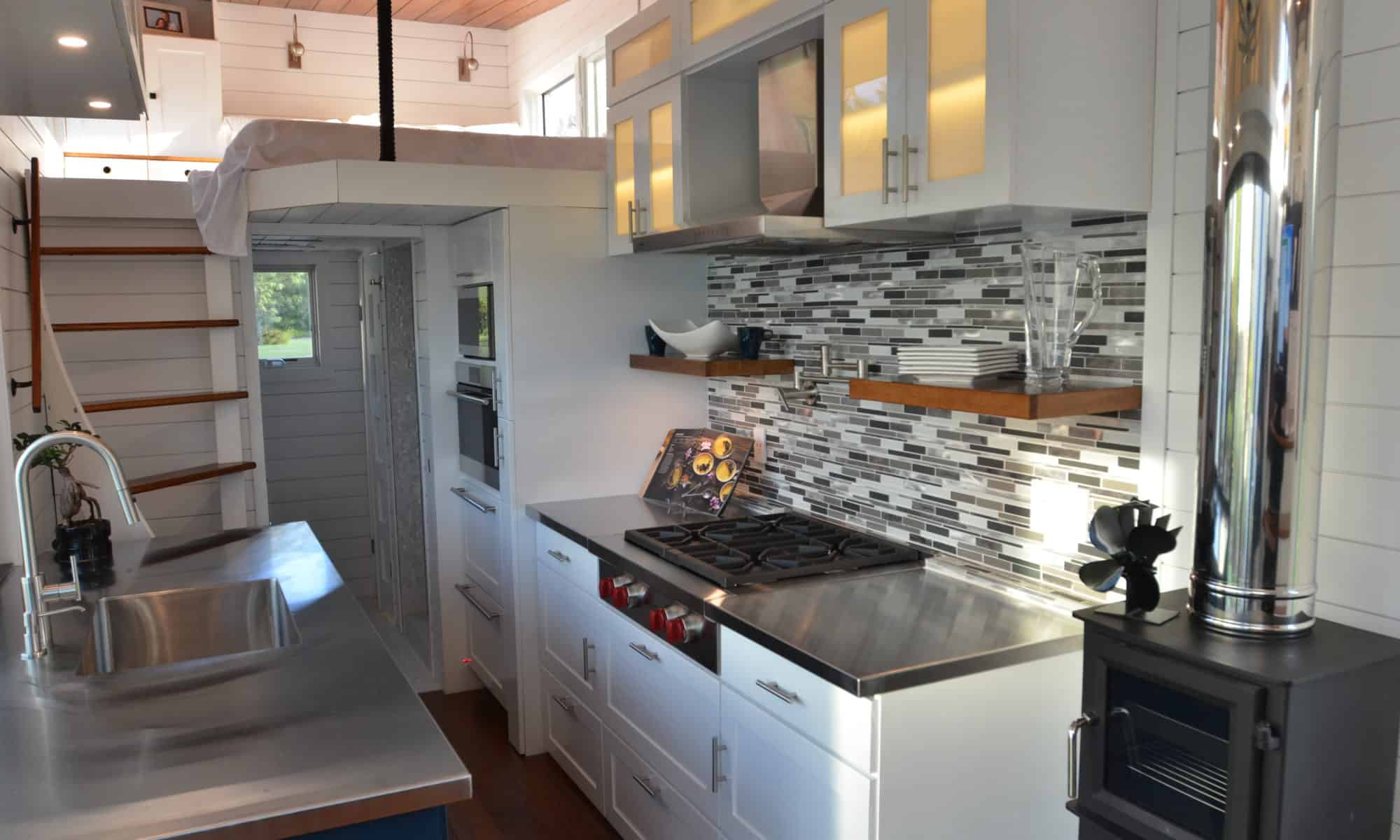There are so many great designs of tiny houses on wheels out there. Just go on Pinterest or Google and you are sure to find one after another. Yet, we know we wanted something that reflected our style. We live in a very traditional classic home today – so we decided to go with a more modern look. After all, we are no spring chickens, the tiny movement is all the rage among millenials, so we have to do our best to fit in.
As we started on our sketches, we had a few requirements.
- A serious cook’s kitchen – that is the heart of the home
- Space for two separated office areas as we both work virtually
- A master bedroom with standing height
- Additional sleep capacity for at least 4 persons
- A bathroom area with a separate door for the toilet
- Lots of light through windows
- Incorporate outdoor decking to make it part of the living space
Did we mention we have to do this in about 300 sq ft? Width could not be more than 8.5 ft, height no more than 13.5 ft. The one parameter we could play with was length. Oh yes, with size comes weight, which equals the need for a large man size truck to tow it. More about that later.
We did not know much about Tiny House On Wheel trailers, so at first we tried to shoehorn all this into a traditional trailer 24-26ft in length. It was getting frustrating as we always had to give up something.
It took a while, but we soon figured out that there was a whole new world out there, the Gooseneck trailer. It added 7-8ft of elevated space, usually accessible via a few steps, and it provided standing room. Voila, our master bedroom.
There are many more details we needed to decide on as well as many manufacturers to choose from, but for now we had selected our foundation choice. We since learned that a Gooseneck trailer is much preferred when it comes to towing as it is much more stable and easier to handle – great bonus.
As far as size, we started at 24ft of the basic trailer with a 7ft gooseneck. That grew to 26 ft and an 8 ft gooseneck.
Next post is about some major choices we made which impacted the rest of the design.


Excellent “though process” and requirement analysis.
A few points came to my mind:
1) Safety
2) Comfort
3) Light weight
4) Operational costs: gas, maintenance, changing tires, emergencies, etc.
Also, I forwarded a presentation of a Mercedes Benz RV on August 13th to my DL. I will send it to you via an email to get some ideas for space planning. You don’t have to start from scratch!!! Improve on existing ideas and possibilities : )
Ali, some great points and we are on the same track. Let me address each as laid out.
1) Safety – number one for sure. There basic safety features as LED lighting, heavy duty tires, and automatic safety brakes release in case the trailer becomes unhitched. Most all trailers have that. Personally I wanted to have electronic brakes on each axle (ours will have 3 heavy duty axels rated for 7,000 lbs each – 3,175 kg). Also as mentioned, the gooseneck is a safer trailer to tow as it is less likely to sway.
2) Comfort – for this it was hands down the Gooseneck as it allowed for the extra headroom and space without increasing the overall trailer length.
3) Light Weight – from a trailer perspective, there are not a lot of choices here, but we will address the weight issue throughout the design and build process as it has huge implications on your next point – gas maintenance/operational cost.
4) Operational cost – as stated above, key here is weight. But we are also looking into various wind deflectors for the roof of our truck as our design is not aerodynamic to say the least (we will share that soon). Another aspect of operational cost is the utilities (gas, electric, and water) and the lack of it when in an off grid mode. We will dedicate at least one or more posts to that topic alone.
Lastly, I do recall the Mercedes RV and it had some very cool and smart features. We look at examples and ideas daily and constantly evolve our thinking. I also hope we can inspire others with some of our own creative solutions. And by the way, the Mercedes was priced at 1.2 million euros. Our budget is just slightly less 🙂
Never doubted your creativity!!
Excellent responses too!
One additional comment. You had mentioned winds and road conditions, etc. Try to make the TL bottom heavy to resist extreme winds and stormy weathers. All the heavy stuff and structures at the bottom, the light stuff, like the beds, on higher levels. A fun idea!!God speed ahead : )